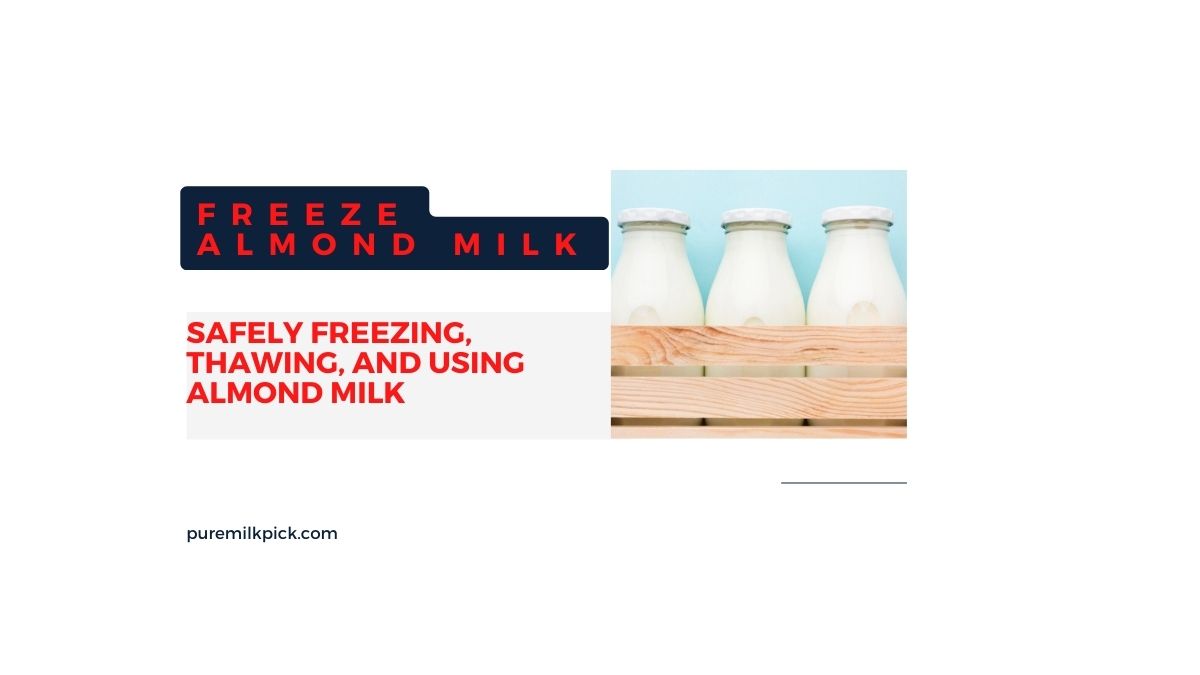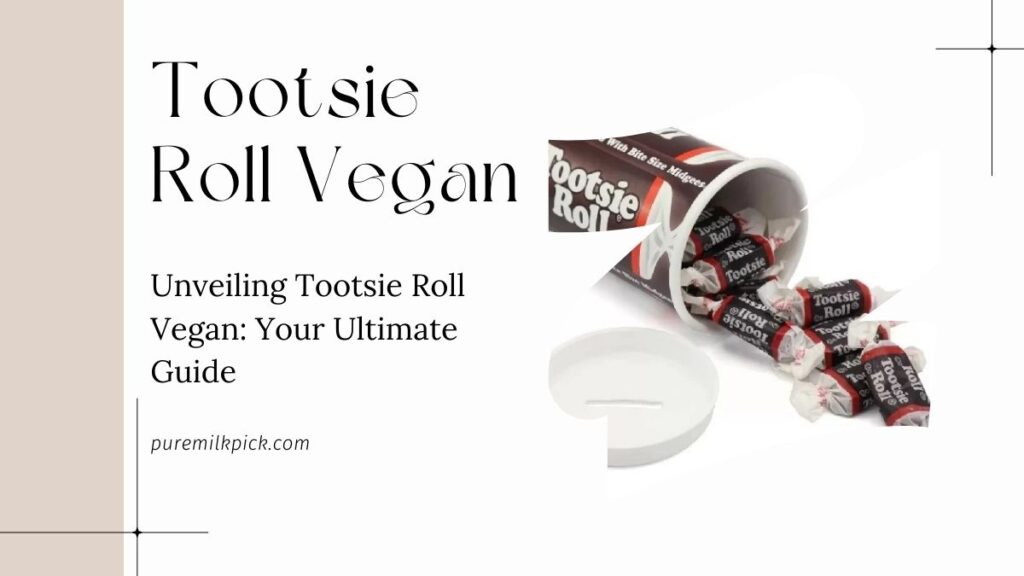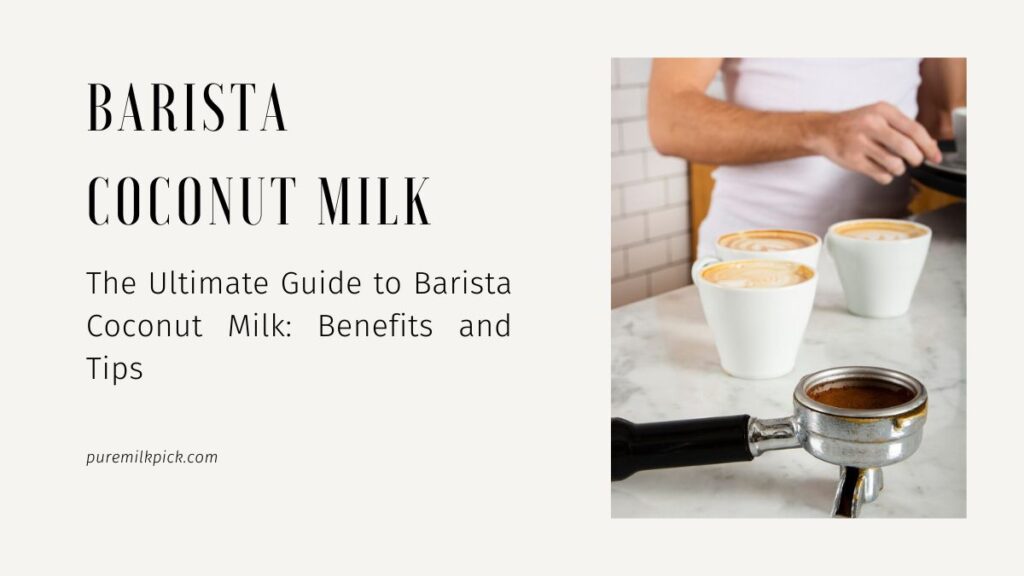Yes, you can freeze almond milk, but it’s important to understand how this process affects the drink. Freezing almond milk is a convenient way to prolong its shelf life, particularly if you’ve bought it in bulk or don’t use it quickly. However, upon defrosting, you may notice a change in its texture and consistency. The creamy, smooth almond milk might separate into a grainy, watery substance. This happens due to the separation of water and fats. Although this makes it less appealing for direct consumption or in tea and coffee, it doesn’t render the milk unusable. It can still be perfectly suitable for cooking or baking, where the change in texture won’t be as noticeable.
Properly freezing almond milk can minimize the texture changes. Start by giving your almond milk a good shake. Pour it into a freezer-safe container, leaving some space at the top as the liquid will expand when frozen. Seal it tightly and label it with the date before putting it in the freezer. To use frozen almond milk, allow it to thaw in the refrigerator overnight. Be sure to give it a good shake or stir before using it to help recombine any separation.
Why Freeze Almond Milk?
Can Almond Milk Lose Its Nutritional Value When Frozen?
Freezing almond milk does not cause it to lose its nutritional value. It retains its original content of vitamins, minerals, and antioxidants even after the freezing process. Almond milk is packed with nutrients such as calcium, Vitamin E, and D, and these remain intact when the milk is frozen. It’s important to note, however, that while freezing preserves the nutrients, improper defrosting can lead to nutrient loss. Therefore, it is recommended to defrost frozen almond milk in the refrigerator rather than at room temperature.
Potential Drawbacks of Freezing Almond Milk
While freezing almond milk has its perks, there are potential drawbacks to consider. One of the major downsides is the change in texture, which can be off-putting for some people. Almond milk may separate and become grainy upon thawing, making it less suitable for drinking or using in cold beverages. Additionally, if you prefer your almond milk fresh, freezing and thawing might alter its original fresh taste slightly.
Best Uses for Frozen Almond Milk
Despite the change in texture and consistency, frozen and thawed almond milk is excellent for cooking and baking. It functions well in recipes that call for milk, such as in soups, sauces, smoothies, pancakes, and baked goods. The change in texture does not affect the outcome of these dishes, making frozen almond milk a versatile ingredient in the kitchen.
Read More: The Bright Future of Coffee Almond Milk
Proper Preparation for Freezing
Explain the necessary steps before freezing almond milk: checking expiration dates, using appropriate containers, and leaving room for expansion.
Before freezing almond milk, it’s crucial to check the expiration date on the carton. Even though freezing can prolong the shelf life of almond milk, it doesn’t mean that it can reverse the spoiling process. Therefore, it’s best to freeze almond milk well before its expiry date to preserve its fresh taste and nutritional value.
When it comes to containers, it’s important to use freezer-safe ones. These are typically made from heavy-duty plastic, glass, or stainless steel, which can withstand low temperatures without cracking or shattering. Avoid using regular plastic containers as these can crack easily in the freezer.
Tips on labeling containers with dates and quantities for easy identification.
Remember to leave some room at the top of the container for the almond milk to expand as it freezes. This prevents the container from bursting or spilling.
Labeling containers is a helpful practice for easy identification. You can simply use a permanent marker to write the date of freezing and the quantity of almond milk on the container. This will help you keep track of your frozen almond milk and use it within the recommended timeframe.

Freezing Techniques
Discuss various methods of freezing almond milk: ice cube trays for portion control, freezer-safe containers, and resealable bags.
There are several methods you can utilize to freeze almond milk, and the best one often depends on your specific needs. One popular method is to freeze almond milk in ice cube trays. This provides an easy way to portion out the milk for future use, especially in recipes. Simply pour the milk into the trays, freeze until solid, then transfer the cubes to a freezer bag for long-term storage.
Another method is to pour the milk directly into freezer-safe containers. This is particularly useful if you plan on using larger amounts of milk at once, such as for cooking or baking.
Lastly, almond milk can be frozen in resealable freezer bags. This method works well if space is a concern, as the bags can be laid flat and stacked to optimize freezer space.
Advantages and disadvantages of each method, considering convenience and ease of use.
Each method of freezing almond milk has its pros and cons. Ice cube trays allow for easy portioning and are perfect for smaller uses, like adding to a smoothie or a cup of coffee. However, it can be time-consuming to fill the trays and transfer the cubes.
Freezer-safe containers are straightforward to use, but they can take up a lot of space, especially if you’re freezing multiple containers at once.
Freezer bags are space-efficient and easy to store, but it can be tricky to pour the milk into the bags without spilling. It’s also important to ensure the bags are sealed properly to prevent leaks and freezer burns. All methods will preserve the nutritional value of the almond milk, so the best method for you depends on your personal preference and freezer space.
Thawing and Using Frozen Almond Milk
Detailed steps on how to thaw frozen almond milk safely: refrigerator thawing, cold water bath, or microwave methods.
When it’s time to use your frozen almond milk, it’s essential to thaw it safely to maintain its quality. The recommended method is to thaw it in the refrigerator. Simply move the frozen almond milk from the freezer to the fridge and allow it to thaw slowly, usually over 24 hours.
A quicker thawing method involves using a cold water bath. Place the frozen almond milk in a sealed bag or container, then submerge it in a large bowl of cold water. Replace the water every 30 minutes until the milk is thawed.
For immediate use, almond milk cubes can be thawed in the microwave. Use the defrost setting and check every 30 seconds to prevent overheating.
Highlight best practices for maintaining quality during thawing.
To maintain the quality during thawing, avoid leaving the almond milk at room temperature for too long as it can lead to nutrient loss. Once thawed, stir or shake the milk to recombine any separated components. Thawed almond milk should be used within a few days and never be refrozen.
Creative ideas for using thawed almond milk in recipes, smoothies, and beverages.
Thawed almond milk is incredibly versatile. It can be added to smoothies for a creamy consistency, used in recipes for pancakes or muffins, or even stirred into soups to add richness. For a refreshing drink, blend it with fruits, a sweetener of your choice, and some ice for a delicious almond milk smoothie. Or, why not try using it as a non-dairy creamer for your coffee? The possibilities are endless, making frozen almond milk a convenient, nutritious ingredient to have on hand.

Storage Duration and Shelf Life
Frozen almond milk can generally be stored for up to three months. This timeframe ensures that while the milk remains safe to consume beyond this point, freezing it for no more than three months helps to maintain its quality and nutritional value.
However, the shelf life can be influenced by several factors. Frequent temperature fluctuations, such as the freezer door being opened often, can shorten the storage duration as it can lead to ice crystal formation on the milk, affecting its texture and taste.
The type of container used for storage also matters. High-quality, airtight containers or bags can help protect the milk from absorbing other freezer smells and prevent freezer burn, thereby extending its shelf life.
In summary, while almond milk can be safely stored in the freezer for an extended period, for optimum taste and nutrition, it’s suggested to use it within three months of freezing. Remember to label the containers or bags with the freezing date to help keep track of the storage time.
Tips for Optimal Freezing Results
Provide additional tips and tricks for freezing almond milk, including avoiding overfilling containers, proper sealing techniques, and rotating stock.
To ensure the best results when freezing almond milk, the following tips may come in handy. First, avoid overfilling containers or bags. Almond milk, like many other liquids, expands when frozen. Leaving about an inch of headspace in the container will allow the milk to expand without causing leaks or spills.
Second, ensure the containers or bags are sealed properly. If using a container, check that the lid fits securely and that there are no cracks. If using freezer bags, press out as much air as possible before sealing. This not only prevents freezer burn but also helps to maintain the milk’s quality and nutritional value.
Lastly, practice rotating your stock. It’s a good habit to use the ‘first in, first out’ rule, meaning you should use older milk before the newly frozen one. This will ensure that the almond milk being used is always the freshest, thereby helping to maintain its taste and nutrition.
Following these simple tips can significantly improve your experience of freezing and using almond milk, and ensure that you always have a ready supply on hand for your culinary needs.
Conclusion
Freezing almond milk is a practical and efficient way to preserve this nutritious beverage, extending its shelf life and reducing waste. Whether you choose ice cube trays, freezer-safe containers, or bags, each method offers unique benefits and some challenges. Remember, the key to maintaining the quality of frozen almond milk lies in safe thawing practices and careful storage. Use it within three months for optimal taste and nutrition, and enjoy the versatility it brings to your recipes, from enriching smoothies to baking goods. With these tips and techniques, you can always have delicious, ready-to-use almond milk at your fingertips.
Frequently Asked Questions
While it is technically possible to freeze almond milk in its original carton, it is not recommended. The milk expands when frozen, which can cause the carton to burst. Also, cartons are not airtight, which may result in the milk absorbing other freezer smells and suffering from freezer burn.
Freezing almond milk does not significantly alter its nutritional value. However, thawing and refreezing multiple times can degrade its quality, which may lead to a slight reduction in nutritional benefits.
The freezing and thawing process can alter the texture of almond milk, making it appear grainy or separated. This is because the water content can separate from the almond particles. A good shake or stir before use can help to recombine the components, restoring them closer to their original state. The taste should remain largely unaffected, but if the milk has been frozen for an extended period or subjected to freezer burn, it might have a slightly different taste.



